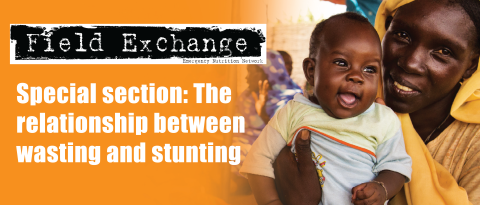Treating high-risk moderate acute malnutrition using therapeutic food compared with nutrition counselling
This is a summary of the following paper: Lelijveld N, Godbout C, Krietemeyer D, Los A, Wegner D, Hendrixson D et al (2021) Treating high-risk moderate acute malnutrition using therapeutic food compared with nutrition counseling (Hi-MAM Study): a cluster-randomized controlled trial. The American Journal of Clinical Nutrition, 114, 3, 955-964. https://academic.oup.com/ajcn/advance-article/doi/10.1093/ajcn/nqab137/6272382?guestAccessKey=7fa4bba8-701b-47a1-9978-e957e88a8cbd
Currently, there is no consistent guidance on how best to manage children with moderate acute malnutrition (MAM). Often, MAM is not treated at all or treated with a variety of non-standardised approaches such as counselling or supplementary feeding. However, neither of these approaches have demonstrated acceptable recovery rates.
This study is a cluster-randomised controlled trial of 22 nutrition clinics in Pujehun District, Sierra Leone. The study investigated whether dividing MAM into high risk (HR-MAM) and low-risk populations and aligning the treatment of HR-MAM children with that of severe acute malnutrition (SAM) would result in higher recovery rates and less deterioration than nutrition counselling alone.
In the 11 intervention sites, HR-MAM children were given ready-to-use therapeutic food (RUTF), amoxicillin – a routinely prescribed antibiotic for SAM cases – and nutrition counselling for two to 12 weeks. All other children received six weeks of nutrition counselling alone. The study defined HR-MAM as mid-upper-arm circumference (MUAC) <11.9 cm, weight-for-age (WAZ) z score <−3.5, mother not the primary caregiver or a child below two years of age not being breastfed. Outcomes were compared using intention-to-treat analysis which included 573 children at the intervention sites and 714 children at the control sites. Overall, 55% of children at the intervention sites were classified as HR-MAM. Short-term recovery was greater at 12 weeks at the intervention sites (48% compared to 39%). Children at the intervention sites had a lower risk of deteriorating to SAM (18% compared to 24%), a lower risk of death (1.8% compared to 3.1%) and greater gains in MUAC and weight than children at the control sites. However, by 24 weeks, the risk of SAM was similar between the two arms. Control group data identified recent illness, MUAC <12.0 cm, WAZ <−3, dropping anthropometry, being a twin, being below 12 months of age and a history of SAM as risk factors for deterioration.
The findings from this study suggest that nutrition counselling alone is insufficient for all children with MAM. The provision of RUTF and antibiotics to HR-MAM children improved short-term recovery and the short-term risk of deterioration. However, recovery rates were still sub-optimal and differences were not sustained six months after enrolment. A longer or more holistic package of interventions may therefore be necessary.


